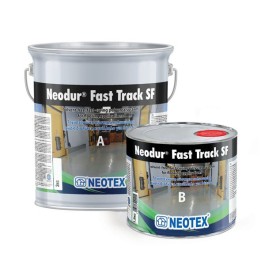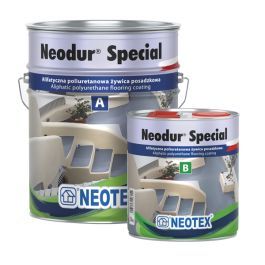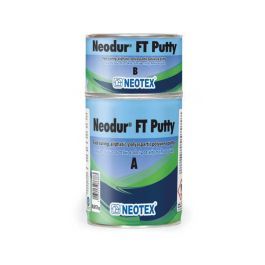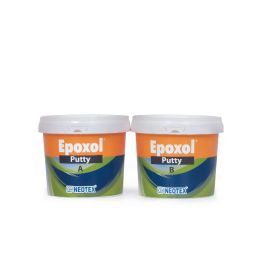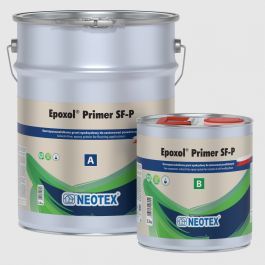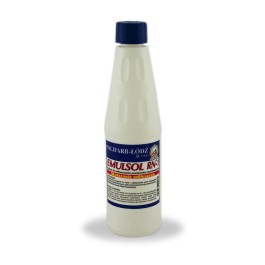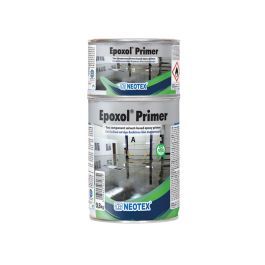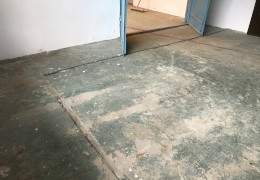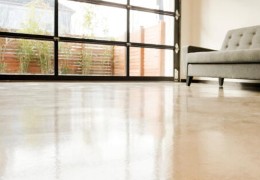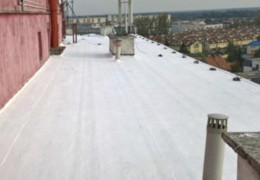Solvent-free, high-build polyurea/polyaspartic resin. The entire system (primer + two layers of resin) within 9 hours (at 25°C). It can also be applied at low temperatures, even down to -10°C .
- Wroclaw,
- Katowice,
- Warsaw,
- Gdańsk,
- Poznań
- +48 717 026 346
Concrete paint
Concrete is one of the most durable building materials, but to keep it aesthetic appearance and full functionality, it is worth protecting its surface with the right paint. Check what types of paints are available in the offer, what properties they have and how to properly prepare concrete for painting.
What is concrete paint?
Concrete paint is a specialized product designed for painting concrete surfaces. Its main goal is to protect concrete against external factors such as moisture, chemicals and abrasion, as well as giving it an aesthetic look, often in a specific color.
Properties of concrete paints
Concrete paints are characterized by:
- Resistance to weather conditions : Most are resistant to UV rays, rain, snow and variable temperatures.
- Chemical resistance : they protect the concrete against the effects of chemicals, such as oils and acids.
- Mechanical durability : they are resistant to abrasion and mechanical damage.
- Water vapor permeability : some concrete paints allow concrete to "breathe", which prevents moisture from accumulating under the painting coating.
Application of concrete paint
Concrete paints are used both inside and outside buildings. The most common applications are:
- Industrial floors : in production halls, warehouses or workshops, where abrasion resistance and chemicals are required.
- Garages and driveways : protect the concrete against oil spots and other car fluids.
- Terraces and balconies : provide aesthetic appearance and protection against weather conditions.
- External and internal walls : give aesthetic appearance and protect against moisture and dirt.
Types of concrete paints
The choice of the right paint for concrete depends on the specifics of the surface and the conditions it will be exposed to. Here are the most popular types of concrete paints:
Polyurea paints
Polyimal paints are modern coatings characterized by exceptional resistance to atmospheric factors and UV radiation. Thanks to this, they are perfect both outside (e.g. terraces, parking lots, driveways) and inside buildings (e.g. garages, production halls). They are also quick -drying, which allows the surface to be put into use in a short time - even 1 day. An example of such a product is the Neodur® Fast Track SF , i.e. a non -release, thick -hexis poliaspargin resin, which allows the entire system to be made (foundation + two layers of resin) within 9 hours at 25 ° C.
Epoxy paints
Epoxy paints consist of two components: epoxy resin and hardener. After mixing, they form a very durable and resistant coating. They are resistant to chemicals, abrasion and moisture. They are often used on industrial floors, in garages or workshops. An example of such a product is Neopox® Special , which is available in different colors and can also be used to paint lines. Unfortunately, epoxy concrete paints in the vast majority do not have resistance to UV radiation, so it is recommended to be used only inside. In the case of external applications, it is necessary to cover them with a coating resistant to the mentioned radiation.
Polyurethane paints
Polyurethane paints are characterized by high resistance to abrasion, UV radiation and chemicals. They create a flexible and durable coating that works perfectly outside, on terraces or balconies. An example of such a product is Neodur® Special , which helps to protect the concrete surface. In addition, it is possible to stain it according to the RAL palette, so you can get a dream visual effect on the terrace, balcony, driveway or in the apartment.
Chlorochaciela paints
Chlorocoader paints are resistant to water, chemicals and weather conditions. They are often used in pools, water reservoirs or on structures exposed to corrosion. Unfortunately, they are very hard and show low durability compared to the types of concrete paints mentioned above.
Advantages of using a concrete paint
The use of concrete paint has many benefits:
- Protection against external factors : paint protects concrete against moisture, chemicals, UV radiation and mechanical damage.
- Improvement of aesthetics : Thanks to the paint, concrete gains an aesthetic appearance, which allows it to be adapted to the environment or interior. The possibility of staining according to the RAL palette many types of concrete paints translates into the enormity of available color options.
- Ease in maintaining cleanliness : painted surfaces are easier to clean and less susceptible to dirt. All you need is a cloth or mop with soft bristles with warm water and a delicate detergent.
- Extending life : paint protection increases its durability and resistance to damage. Usually, these are ranges from a few to even several years depending on the product used, applied thickness, as well as operation and subsequent maintenance.
How to prepare concrete for painting?
In order for the paint to stick well and fulfill its functions, you need to properly prepare the concrete surface. Here are the steps that are worth taking:
Assessment of the condition of the surface
The state of concrete should be assessed before painting. It is worth checking if there are cracks, cavities or other damage that requires repair. In the event of cavities or cracks, it is necessary to supplement them using preparations based on epoxy or polychocaster resins. , ready -made repair masses , such as EPOPXOL® Putty or EPOXOL® Liquid are used , which allow you to prepare different consistency of repair mass from flexible to dense. Another product used for this purpose is Neodur® FT Putty , which is built on the basis of a polymaker resin. It is a quick -drying and quick -hearted product, which is why it is recommended to experience it in working with this type of products for its use. To supplement cavities, you can also use non-release epoxy soils , e.g. EPOXOL® Primer SF-P , which gives the ability to mix with quartz sand in various proportions, creating an appropriate repair mass for defects and concrete cracks.
Surface cleaning
All dirt, dust, fatty spots and other substances should be removed, which can weaken the paint's grip. If necessary, you can use a pressure washer or specialized cleaning agents. Funds such as emulsol or sulfanol A . However, you need to remember to thoroughly wash the concrete from the residues after these agents so as not to reduce the grip of the paint to concrete.
Priming concrete
The use of appropriate soil improves paint adhesion and increases its durability. In the case of poor quality concrete substrates, such as anhydrite or screed, it is recommended to use approximate epoxy land that will strengthen the ground. An example of such land is EPOXOL® PRIMER . Then, in order to close the absorbency of the substrate, epoxy primers are applied, which do not contain solvents, e.g. EPOPXOL® Primer SF-P. If the concrete is wet both on the surface and inside, the soil for moist concrete - Neopox® Primer WS .
How to apply a concrete paint?
The correct application of concrete paint is crucial for its durability and aesthetics. You must follow a few rules to get the best results.
Choosing tools and painting techniques
The choice of appropriate tools depends on the type of paint and the surface that we intend to paint. The most commonly used tools are:
- Painting roller - ideal for large, smooth surfaces.
- Brush - helpful when painting edges, corners and hard to reach places.
- Painting spray - provides even cover and is used on larger industrial areas.
When painting, avoid excessive application of paint, as this can lead to the formation of stains.
Application of layers and drying time
- The first layer - should be thin to ensure good adhesion.
- Drying time - depends on the type of paint and weather conditions, usually from 4 to 12 hours. Drying times and environmental conditions are described in product technical cards.
- The second layer - in most cases is necessary, applied after the first dries completely.
Do not use the painted surface for at least 7 days so that the paint can harden properly.
Product offer
Polyurethane resin resistant to UV radiation and other atmospheric factors. Provides high mechanical and chemical resistance.
Mass for filling holes, gluing and repairing floors and walls. It allows sanding and repainting within 2 hours after application.
Two-component putty for a wide range of applications. Depending on the mixing ratio of the ingredients, you can obtain a flexible, hard or very hard mass. Recommended for metal, concrete, wood and ceramics. Also for car and yacht repairs.
Epoxy resin for use as a primer or construction resin. A solvent-free product for priming walls and floors and creating the so-called epoxy screeds.
Concentrated agent for degreasing surfaces before painting. Mainly recommended for use before painting with anti-corrosion products.
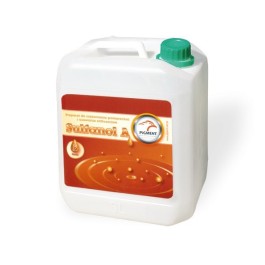
- NOTE: WATER-BASED PRODUCT. Choose temperature-controlled shipping to receive the product on the declared date, regardless of the weather. Standard shipments may be held due to temperatures below 5°C along the delivery route.
- Product
- Substrate preparation
For cleaning concrete, roof tiles and metal before applying paint coatings. Requires rinsing with water.
Solvent-based epoxy primer for epoxy paints, polyurethane resins. For use on floors and walls where high mechanical and chemical resistance is required.
What are the best concrete paints?
keyboard_arrow_down keyboard_arrow_upThe best concrete paint depends on its use. Acrylic paints work well for the internal surfaces, while epoxy, polyurethane or polyomunic paints will be the best for garage or industrial floors.
Does concrete paint require special care?
keyboard_arrow_down keyboard_arrow_upSo that the paint retains its properties as long as possible, it is worth cleaning the surface regularly, avoiding the use of aggressive chemicals and periodically renew the protective coating.
How long does the paint on the concrete last?
keyboard_arrow_down keyboard_arrow_upThe durability of the paint depends on its type and operating conditions. At home, the paint can stay up to 5-10 years, while in places with high traffic, it may be necessary to renew the coating more frequently.
Proven products
Here you will find products with high strength and technical parameters. Thanks to this, you can enjoy long-lasting effects.

Help in choosing
Are you wondering which products will be best for your needs? Call us - we will advise you and choose the right solution.

Contractor support
Do you need help with construction work? Let us know and we will recommend proven contractors.
Stationary points
Do you want to collect the products in person? Or maybe you prefer to talk live? Visit our branch in: Warsaw, Wrocław, Katowice or Gdańsk.


